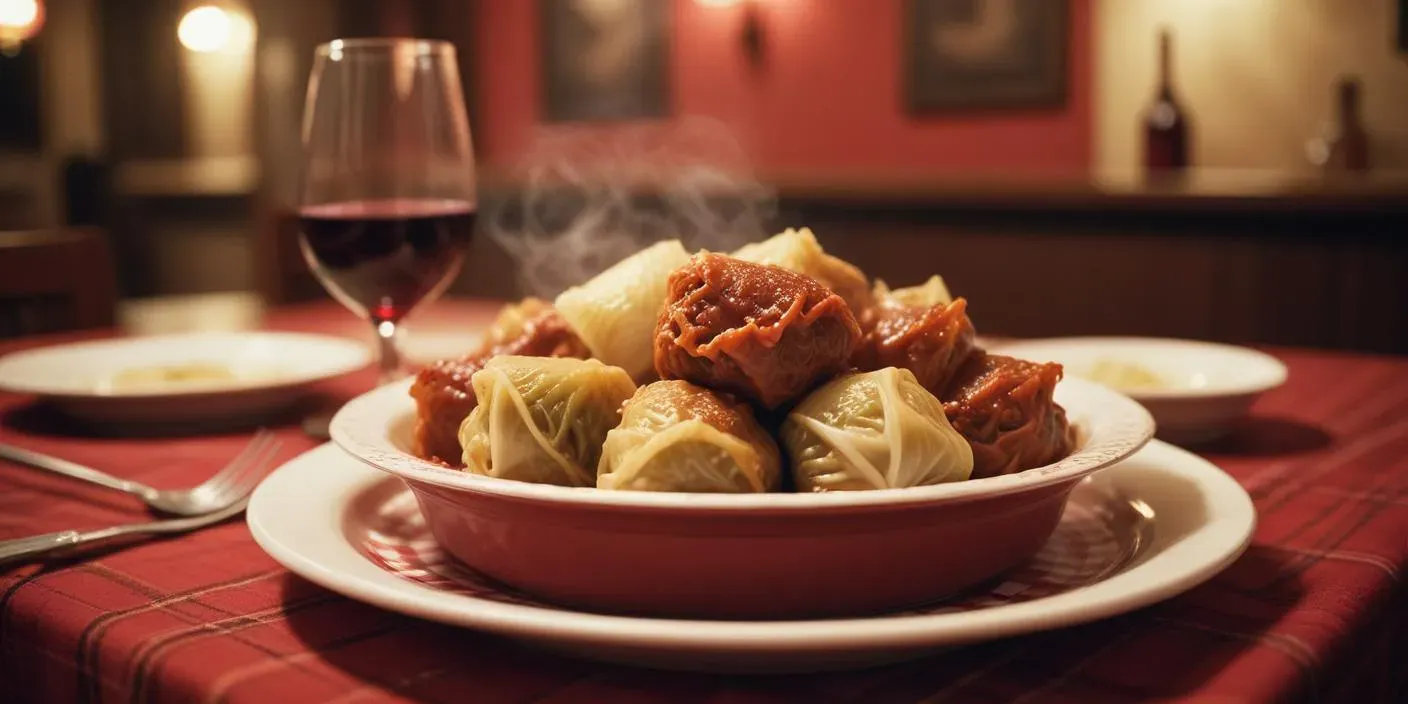Contents
Hungarian stuffed cabbage, known as töltött káposzta, is a cherished dish in Hungary’s rich culinary tradition. With deep flavors, hearty ingredients, and a long-standing history, this dish has become a staple of Hungarian home cooking and festive celebrations. While variations of stuffed cabbage can be found across Eastern Europe, the Hungarian version stands out due to its signature smoky aroma, the use of fermented cabbage, and a slow-cooked process that allows flavors to fully develop.
Ingredients
For the cabbage rolls:
- 1 large head of fermented cabbage or fresh cabbage, softened in boiling water
- 500 g ground pork
- 100 g uncooked rice
- 1 medium onion, finely chopped
- 2 cloves garlic, minced
- 2 tbsp sweet Hungarian paprika
- 1 tsp salt
- ½ tsp black pepper
- 1 pcs egg optional, for binding
For the cooking base:
- 200 g smoked pork ribs or smoked sausage, sliced
- 500 g sauerkraut, rinsed and drained
- 2 tbsp lard or vegetable oil
- 2 tbsp flour for thickening the sauce
- 1 liter beef or pork broth
- 2 bay leaves
- 1 tsp caraway seeds
- 200 ml sour cream for serving
Instructions
- Prepare the cabbage leaves – If using fresh cabbage, core the head and blanch it in boiling water for a few minutes until the leaves become soft and pliable. If using fermented cabbage, gently separate the leaves and rinse them to remove excess brine.

- Make the filling – In a large bowl, mix the ground pork, rice, onion, garlic, paprika, salt, and pepper. If desired, add an egg to help bind the mixture.
- Form the cabbage rolls – Place a spoonful of the filling onto a cabbage leaf. Fold in the sides, then roll it tightly from the base to the tip. Repeat with all the leaves and filling.
- Layer the pot – In a large pot, heat lard or oil and lightly sauté the sauerkraut. Arrange a layer of sauerkraut at the bottom, followed by smoked meat pieces. Place the cabbage rolls on top in a snug layer.
- Prepare the cooking liquid – In a separate pan, whisk together the flour and a bit of oil or lard to make a light roux. Slowly add the broth, stirring constantly to prevent lumps. Pour the mixture over the cabbage rolls.
- Simmer slowly – Add bay leaves and caraway seeds to the pot. Cover and simmer on low heat for about 2.5 to 3 hours, ensuring the flavors blend together beautifully.
- Serve and enjoy – Serve hot with a generous dollop of sour cream on top. For a more authentic touch, pair it with fresh bread to soak up the flavorful sauce or enjoy it with spicy pickled peppers.
Notes
A fusion of cultures: the origins of stuffed cabbage
The history of Hungarian stuffed cabbage can be traced back to the Ottoman Empire, which introduced the concept of wrapping seasoned meat in leaves. The Turkish sarma, traditionally prepared using vine leaves, made its way into Central Europe during the Ottoman rule. Over time, Hungary adapted the dish to its own tastes, replacing vine leaves with fermented cabbage, which was more commonly used in the region. This local adaptation also incorporated smoked meats and the country’s beloved spice, paprika, resulting in a dish with a unique Hungarian identity.
What makes Hungarian stuffed cabbage unique?
Unlike other versions of stuffed cabbage, the Hungarian recipe is distinguished by several key features:- 🥬 Fermented cabbage leaves – impart a tangy depth of flavor, balancing the richness of the filling.
- 🍖 A robust filling – made with a mixture of ground pork, rice, garlic, onions, and generous amounts of Hungarian paprika.
- 🥓 The addition of smoked meats – enhances the dish with a deep, savory flavor.
- 🍲 A slow cooking process – allows all ingredients to meld together, creating a rich and comforting dish.
When is Hungarian stuffed cabbage enjoyed?
- 🍽 Holiday feasts – A classic dish served at Christmas and other festive gatherings.
- ❄ Winter comfort food – Perfect for cold weather, offering warmth and nourishment.
- 🥘 Family dinners – A beloved home-cooked meal that brings generations together.

Why you should try Hungarian stuffed cabbage
- 🍽 A rich and satisfying dish that showcases Hungarian culinary traditions.
- 🌶 A perfect balance of tangy, smoky, and savory flavors.
- 🍲 A hearty and comforting meal ideal for cold days.
- 🌍 A wonderful way to experience Eastern European cuisine in an authentic way.






This sounds absolutely delicious! The mention of fermented cabbage immediately piqued my interest – I love the depth of flavor that fermentation brings. My question is, what kind of meat (or meat substitute) do you typically use in your recipe, and how does the choice of meat influence the overall flavor profile? I’m eager to try this, especially given the emphasis on the slow-cooked process.